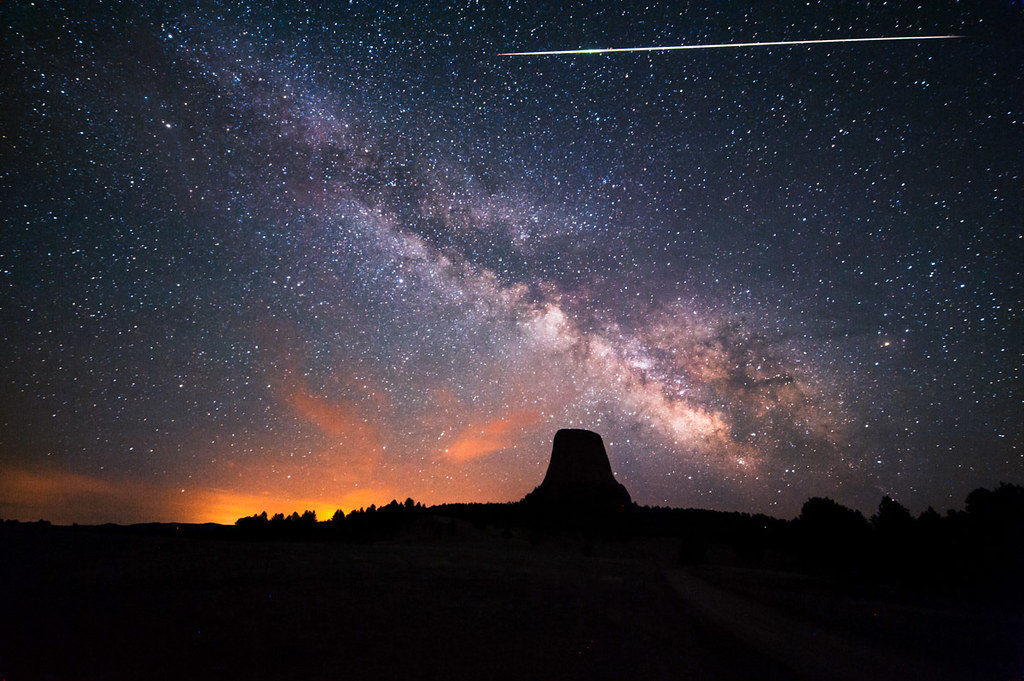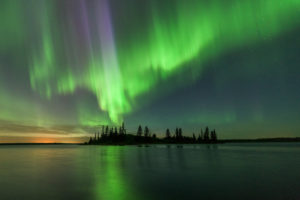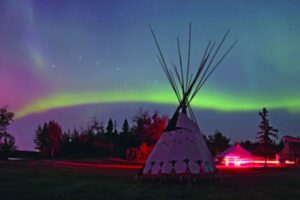
The 2013 Eta Aquarid meteor shower captured over Devil’s Tower at the Bear Lodge Mountains in Wyoming. Photo Credit: David Kingham / Flickr
Every year from late April to mid-May, sky watchers are on the lookout for the Eta Aquarid meteors. These fast showers light up the night sky and provide a visual treat.
What is an Eta Aquariid meteor shower:
The Eta Aquariid meteor showers originate from Comet Halley. Comet Halley takes around 76 years to orbit the sun. The dust grains left by Halley, during its time in the inner solar system, form the Eta Aquarids meteors. The Eta Aquariids are very fast, travelling at rate of 44,000 mps. At its peak, one can see around 30 Eta Aquariids per hour.
The radiant, ie, the point in the sky from which the showers appear to originate, is Eta Aquarii, the brightest star of constellation Aquarius. The name, Eta Aquariid comes from this star and the constellation.
Can we see Eta Aquariid shower:
The Eta Aquariids are predominant in the Southern Hemisphere. Those living in the Northern Hemisphere and especially those in the northerly latitudes may not be able to see as many showers. In the Northern Hemisphere, the meteors may appear as “earthgazers” skimming the surface of the Earth at the horizon.
When to watch for Eta Aquariid shower:
The Eta Aquariids are expected to peak during May 3-6, with maximum showers before dawn on May 5. The radiant rises around 1:40 a.m. local time and may not be very high in the sky for mid-northern latitudes.
The waxing moon is expected to be approximately 15 percent full during the predawn hours. But it is not expected to greatly hinder the viewing on the mornings of May 5 or 6. As long as you can find a good spot, you may still see around 10 meteors per hour.
It is also possible to watch the Eta Aquariids in the early hours of May 3 and 4.
How to see the Eta Aquariid meteor shower:
Required Conditions: Clear Sky away from city lights — Check clear sky (cloud) conditions in your area – here.
It is possible to get a good viewing of the showers even on a moonlit morning. To view in such conditions, find a place that will block out the moon while also providing a wide expanse of sky – such as an open field with high mountains or hedgerow of trees that can block the moon when far from city lights or just sit under the shadow of a building.
Once you find an area in a moon shadow away from city or street lights, lie flat on your back (to get the widest view of the sky) and look straight up. Let your eyes get adapted to the dark.
Watch the night sky for at least 15 to 20 minutes for a chance to spot meteors. You can see the shower with a naked eye and do not need astronomy equipment.
Make sure you switch off the phone and your eyes need ~ 30 minutes to get adjusted to the dark. If you are carrying a flashlight, cover it with red cellophane wrap or some kind of red filter, so that it doesn’t interfere with viewing.




